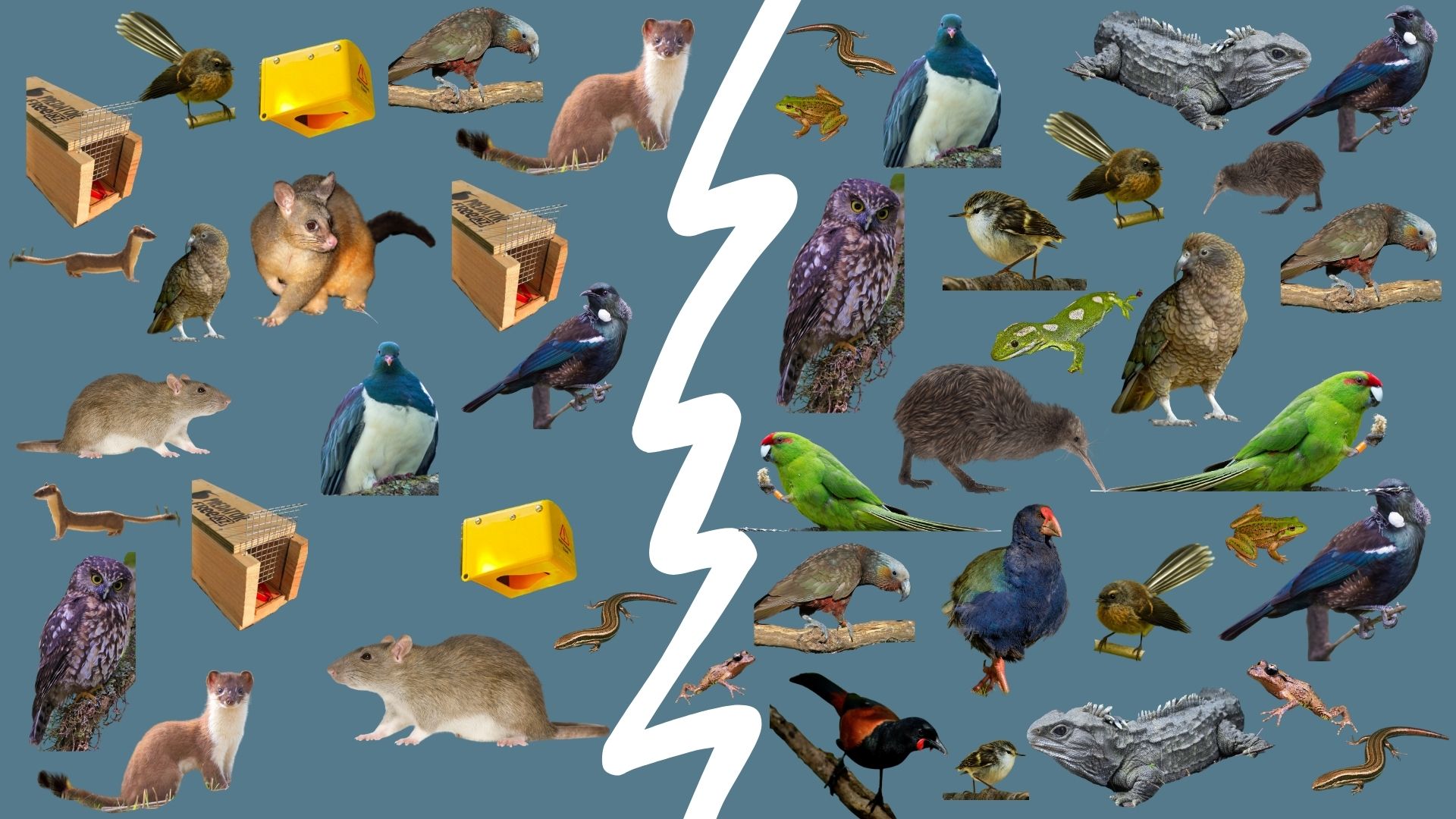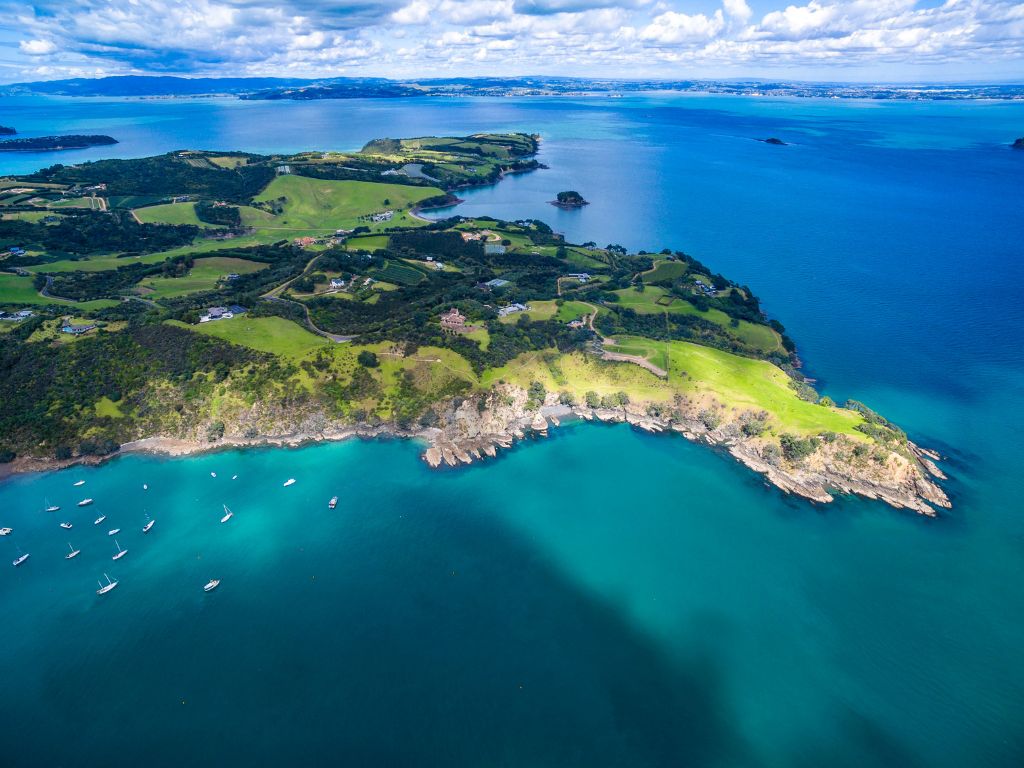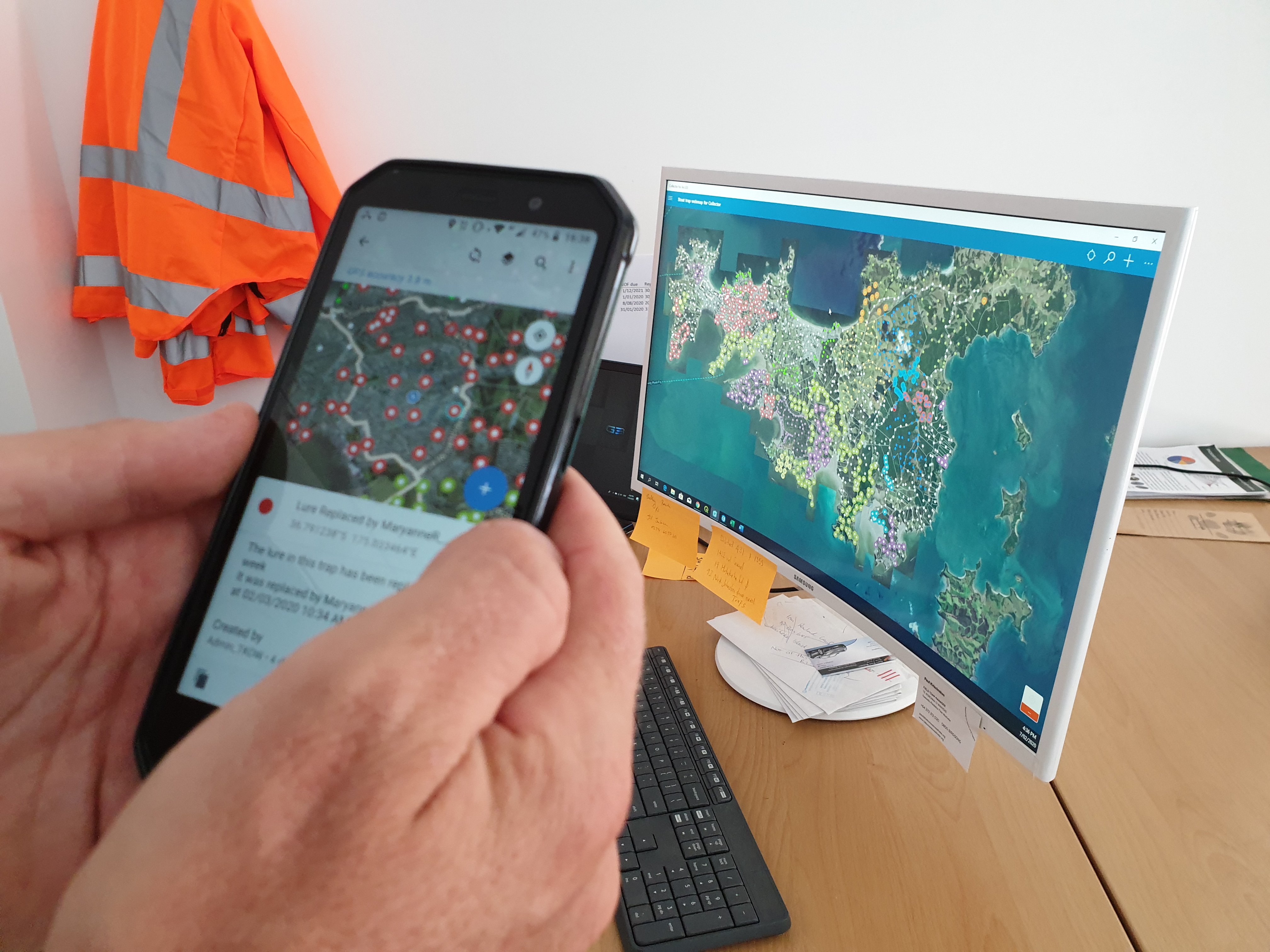The words “suppression” and “eradication” get used a lot in the predator free movement. But what do these terms actually mean? While suppression (also known as control) is keeping a lid on populations of predators and making sure the pot doesn’t boil over, eradication is completely emptying the pot so there’s nothing left.

To understand the finer differences between the two, we caught up with Mary Frankham, Founding Project Director and Jenny Holmes, newly appointed Project Director for Te Korowai o Waiheke – an ambitious group set on making Waiheke the world’s first predator free urban island. They’ve been running a stoat eradication programme for a couple of years and have started testing how to remove rats.
Similar tools, different method
Groups up and down the country work hard at suppressing introduced predators. Suppression methods are accessible – they’re the traps in your backyard and neighbourhood – and they’re essential to reducing the harm caused by introduced predators.
But to really achieve the Predator Free 2050 vision, islands like Waiheke need to aim for eradication. Because as Mary explains it, “control or suppression reduces the risk, but eradication removes the risk entirely.”
Suppression and eradication work out of the same toolkit but use the tools differently.
“It’s easy to grasp the concept of zero, but it can be trickier to understand the difference in method between the two approaches,” Mary says.
“Eradication requires more than just scaling up the suppression work – it’s a kind of event, and you need to plan and prepare for that event to happen.”

Eradications are complex and require planning. They depend on a robust scientific method and approach, careful consideration of the risks, and lots of testing and trialling to ensure your methods will work.
Waiheke’s stoat eradication
Waiheke is a dynamic place. Before the pandemic hit, the island saw more than one million visitors yearly, on top of the 9000 permanent residents. The island boasts beaches, forests, wetlands, mangroves, wineries, farms, bustling villages and rare seabirds.
It’s also home to dedicated locals who’ve put in the hard yards controlling predators over the years. Mary says launching a stoat eradication project was a no-brainer because “a lot of really good control work had already been done by the community.”
After a successful pilot programme, Te Korowai o Waiheke began their stoat eradication in February 2020. Since then, a collaborative team of trappers have serviced more than 1650 traps over 120,000 times in total. They’re now tantalisingly close to success.
“We know from genetic analysis that there were probably between two and four breeding females last summer, and we’re continuing to reduce that population. Detection dogs are out on the island regularly now that we are down to low numbers to help track down dens or signs of stoats,” says Jenny Holmes.
Rat testing
Gearing up to eradicate Norway and ship rats is next. The Waiheke team ran trials at three key sites on the island in 2022. The three sites reflected the diverse landscapes of the island and aimed to find out which methods might work best in which locations.

A gnarly mix of cafés and industrial zones, wetlands and mangroves meant the team had to get creative. Up for the challenge, they designed floating bait stations that bobbed with the tide in the mangroves, serviced a dense grid of bait stations weekly and used cameras, wax blocks and chew cards to track their progress. Since May, they’ve caught over a thousand rats.
Armed with everything they’ve learned from these trials and the stoat eradication, Te Korowai o Waiheke is getting closer to launching their rat eradication. Before then, they’ll keep testing and learning – “we want to make sure we have the best chance of success,” Jenny says.
No project’s an island
It takes a huge effort to run an eradication. Te Korowai o Waiheke involves volunteers, iwi partners Ngāti Pāoa, scientists and predator control experts, paid staff, contractors and residents and property owners. Jenny believes there are three key ingredients to success – community support, funding, and technical expertise.
The first ingredient is key – “In order to deliver an eradication for Waiheke, the best detection tool we have is the community,” Jenny says. Unsure where or when that last wily stoat will pop up, they need the public to dial in when they see one.
It’s like an emergency eradication hotline – when a stoat sighting happens, the nimble team immediately spring into action to hunt it down. At this stage, with stoat numbers so low, “everyone gets really excited that this could be the last one,” Jenny says.
The community is also key to monitoring outcomes, and Waikehe Islanders are encouraged to take part in the annual New Zealand Garden Bird Survey and the Great Waiheke kākā count. Kākā numbers are soaring now that stoat numbers are low, and korimako (bellbird) and kākāriki have recently been spotted.

Protect your patch
Suppression efforts like backyard trapping make a real difference in protecting taonga species. Often, a community group’s trapping or baiting programme will hold back further extinction events until we have the correct technology and methods to ensure eradication.
If you’re keen to support the predator free vision, suppressing predators in your own backyard and local community is a great way to help. Find your local group with this interactive map.

